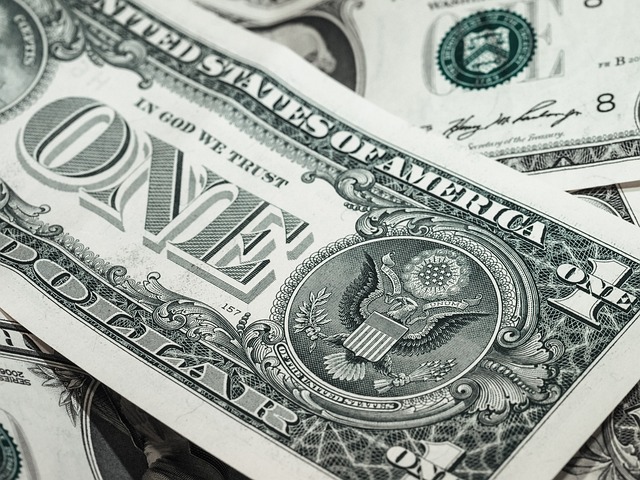Coinbase considering applying for US bank license
US-based publicly traded crypto exchange Coinbase confirmed that it is considering applying for a US federal bank charter.In a statement sent to Cointelegraph, Coinbase said it is considering pursuing a US federal bank charter, a company spokesperson said.“This is something Coinbase is actively considering but has not made any formal decisions yet,” the spokesperson told Cointelegraph. Coinbase in-office photo. Source: CoinbaseThe comments follow recent reports suggesting that Coinbase and multiple other major crypto firms were planning to apply for a banking license in the United States. Coinbase, stablecoin issuers Circle and Paxos, and crypto custodian BitGo are the firms in question.Coinbase did not clarify why it is considering pursuing a bank charter by the time of publication. Still, the license could potentially allow crypto firms to operate like traditional lenders, taking deposits and making loans.On the other hand, firms that obtain banking charters are subject to stricter reporting and regulatory oversight. One example is Anchorage Digital, a crypto firm holding a federal bank charter.Despite the firm obtaining the license, recent reports indicate that the US Department of Homeland Security’s El Dorado Task Force has reportedly launched an investigation into Anchorage Digital Bank.Related: Crypto companies seeking bank charters under Trump admin — ReportMany crypto firms are likely to applyCointelegraph reached out to the other firms reportedly considering a charter. Coinbase was the only one to respond without denying the report. The reports also follow the US Office of the Comptroller of the Currency granting a preliminary conditional approval for a US bank charter to Paxos back in 2021. The firms are now considering applying as the US regulators take a much softer stance on crypto regulation and integrate stablecoins in the broader financial system.The change in stance is visible at multiple levels of the US federal government. Federal Reserve Chair Jerome Powell recently said that as digital assets gain mainstream adoption, establishing a legal framework for stablecoins is a “good idea.” He also recognized that the crypto space delivered a consumer use case that “could have wide appeal.”Related: ECB flags risk of financial contagion from US crypto pushEvolving US stablecoin regulationThe US House Financial Services Committee passed a Republican-backed stablecoin framework bill earlier in April — the Stablecoin Transparency and Accountability for a Better Ledger Economy (STABLE) Act.Another bill that is moving through the US legislative process is the Guiding and Establishing National Innovation for US Stablecoins (GENIUS) Act. The STABLE and GENIUS bills differ in how they regulate the stablecoin industry in their current form.The GENIUS Act was introduced first and passed the US Senate Banking Committee in mid-March. The STABLE Act, on the other hand, emphasizes federal oversight, while the GENIUS Act seeks a more flexible path that considers both state and federal regulations.The STABLE Act also enforces a two-year moratorium on issuing collateralized stablecoins that are backed by self-issued digital assets. The bill also enforces that stablecoin reserves be held separate from business funds.The GENIUS Act establishes a legal framework for stablecoin payments and leverages US-based stablecoin issuers in an attempt to reinforce the dollar’s global dominance. The bill also enhanced Anti-Money Laundering (AML) safeguards, reserve and liquidity standards and sanctions checks. It classifies stablecoin issuers as financial institutions.Magazine: Coinbase and Base: Is crypto just becoming traditional finance 2.0?
Oregon AG lawsuit against Coinbase calls XRP unregistered security
Oregon Attorney General Dan Rayfield’s lawsuit against Coinbase argues that XRP and other digital assets are unregistered securities.Rayield sued US-based, publicly traded crypto exchange Coinbase for allegedly violating Oregon’s securities law. In an April 18 announcement, the Oregon Department of Justice said the suit was part of an effort to fill what it described as a regulatory vacuum left by federal agencies under the Trump administration:“States must fill enforcement vacuum being left by federal regulators who are abandoning these cases under Trump administration,“ the department said.Coinbase chief legal officer Paul Grewal voiced his frustration over the lawsuit in an April 21 X post. Justin Slaughter, the vice president of regulatory affairs at crypto investment firm Paradigm, pointed out that the lawsuit claims a long list of digital assets, including XRP (XRP), are unregistered securities.Source: Paul GrewalYarden Noy, partner at crypto legal firm DLT Law, told Cointelegraph that if the court ruled these assets are securities, it “would mostly create more confusion in this regard.” It would not be a binding precedent in other cases, not even within Oregon, he added.Still, Noy explained that the court decision could be used by regulators and potential plaintiffs to build and make their cases. He said:“Just like the decision in the Ripple case […] which the complaint seems to be ignoring entirely, did not make all tokens immediately listable on US platforms, I don’t expect the opposite to happen here.”Related: Court grants 60-day pause of SEC, Ripple appeals caseA long list of crypto assetsParadigm’s vice president of regulatory affairs Justin Slaughter called the action a “kitchen sink lawsuit.” The list of tokens cited includes high-profile altcoins such as Aave (AAVE), Avalanche (AVAX), Uniswap (UNI) and Near Protocol (NEAR), as well as the wrapped version of Terra’s collapsed token, wLUNA — but not LUNA itself.The complaint does not explain why certain wrapped assets were included while others were excluded. It states:“Coinbase—through the Coinbase Platform and Prime—has made available for trading in Oregon crypto assets that are offered and sold as investment contracts, and thus as securities. This includes, but is not limited to, the units of each of the crypto securities further described below.“Related: Circle, BitGo about to apply for bank charters, others may follow: WSJXRP in the legal crosshairs once againRipple Labs, the firm behind XRP, has already faced a years-long legal battle with the US Securities and Exchange Commission. Ripple was hit with a lawsuit by the SEC in late 2020, calling XRP a “$1.3 billion unregistered securities offering.”The same lawsuit was dropped by the SEC in late March, but it provided little legal certainty for the crypto industry. Oregon’s complaint comes amid growing concern among state officials that federal regulators are pulling back from crypto enforcement. The suit appears to be part of a broader trend of state-level authorities stepping in.Before Oregon’s action, XRP’s legal standing was being viewed as increasingly clear. Coinbase — a crypto exchange known for its relatively cautious stance on regulatory matters — added XRP futures to its derivatives trading platform on April 21.Magazine: XRP win leaves Ripple and industry with no crypto legal precedent set
XRP price holds above key trendline — Can whale accumulation push it to $3?
XRP (XRP) has been trapped within a tight range over the last eight days. The altcoin trades just above its $2.00 support after a marketwide recovery over the weekend.Onchain and technical data now show that the XRP/USD pair is well-positioned for a breakout toward $3.00.XRP/USD daily chart. Source: Cointelegraph/TradingViewXRP whale accumulation is backXRP’s price has been consolidating between $2.03 and $2.13 since April 14. The daily relative strength index (RSI) remained flat at around 49 over the same period, signaling market indecision.Despite this sideways price action, whale activity paints a promising picture, with onchain data showing large investors took advantage of the drop to $1.61.Related: Coinbase Derivatives lists XRP futuresXRP whale addresses holding between 10 million and 100 million XRP (black line) have increased sharply since April 1, according to data from Santiment. Similarly, addresses holding more than 1 billion XRP (red line) have steadily increased as well. This whale cohort currently accounts for 39.37% of the total XRP supply, compared to 37.67% toward the end of March. This possibly underscores the confidence of these large investors in XRP price rising despite growing macroeconomic risks and uncertainties. XRP supply distribution. Source: SantimentAdditionally, XRP experienced a significant drop in exchange reserves. XRP balance on exchanges peaked at 3.27 billion XRP in November 2024. Today, around 2.7 million XRP are held on exchanges. The metric has also dropped by 10% over the last 30 days despite the market turbulence experienced since the beginning of April.XRP balance on exchanges. Source: CryptoQuantCan XRP price rise to $3?XRP’s price action between April 7 and April 22 has led to the formation of a bull flag pattern on the daily chart. The price is retesting the upper trendline of the flag at $2.10, suggesting that a possible breakout is in play.Note that the price has unsuccessfully tried to rise above this trendline two to three times in the last ten days, with each retest leading to new buyers accumulating around this region.A decisive close above this trendline could see XRP recover from the current level. It may break out toward the flag’s technical target at $2.93 or the $3.00 psychological level if backed by strong volume.XRP/USD daily chart. Source: Cointelegraph/TradingViewSeveral analysts echoed this bullish outlook, citing XRP’s consolidation as a precursor to a significant move upward.Citing a chart showing XRP price consolidating above $2.00 in the weekly timeframe, popular trader Dark Defender said the altcoin was retesting a key multimonth resistance line.If this resistance is broken, the price will break out, with Wave 5 playing out toward $4.00.“The XRP is bullish, and the crypto is more bullish than ever before.”XRP/USD daily chart. Source: Dark DefenderThe key levels to watch are the $2.22 and $2.75 on the upside and the $1.80 and $1.61 on the downside, according to the analyst. Meanwhile, fellow trader CasiTrades said that the rejection at $2.24 implied that the price is likely to sweep major support levels around $1.90 or $1.55 before “XRP is ready to break out.”As earlier reported by Cointelegraph, Wyckoff reaccumulation and falling wedge patterns are painting a bullish target for XRP above $3.50.This article does not contain investment advice or recommendations. Every investment and trading move involves risk, and readers should conduct their own research when making a decision.
Polygon NFTs overtake Ethereum collectibles in 7-day sales
Polygon-based non-fungible tokens (NFTs) took the top spot in digital collectible sales after surging 20% in the last seven days. On April 22, NFT data tracker CryptoSlam showed that Polygon NFTs overtook Ethereum, reaching a $22.3 million volume in the past week. This represented 24% of last week’s overall NFT sales volume, which reached $92.9 million. The network also had over 39,000 NFT buyers for the week, an 81% increase over the previous week. Ethereum remained second in sales, with a $19.2 million NFT sales volume for the week. Mythos Chain followed with $14.3 million, while Bitcoin-based collections ranked fourth with $14.1 million for the week. Top blockchains by seven-day NFT sales volume. Source: CryptoSlamRWA NFT collection drives Polygon surgeThe Polygon NFT surge was driven by a single real-world asset (RWA) NFT collection, highlighting that the RWA narrative has reached the NFT space.RWA tokenization refers to tangible assets minted on the blockchain to increase accessibility and trading opportunities for the assets. Simply put, it’s transforming real-world assets like art, property or even stocks into digital tokens on a blockchain that can be bought, held or traded.CryptoSlam data shows that increased sales from Courtyard NFTs caused the Polygon NFT surge. The collection reached a sales volume of $20.7 million, eclipsing the performances of other popular NFT projects for the week. Courtyard NFT collection tops digital collectible sales volume list. Source: CryptoSlamRelated: Bybit shuts down four more Web3 services after axing NFT marketplaceCourtyard is an RWA marketplace for graded physical card collections. This includes the Pokémon, basketball and baseball cards that are popular among collectors. The platform operates by storing and insuring tokenized cards in a vault operated by a security company. This means that NFTs are physically backed. After purchasing NFTs, users can opt to redeem the physical card. When this happens, the NFT is burned and will no longer be traded in the marketplace. Onchain RWAs have been a strong narrative in the first quarter of 2025. Data from RWA.xyz shows that tokenized assets have reached $21.2 billion, with total asset holders of more than 97,000. This excludes the value of stablecoins, which is already at $227 billion. Magazine: Your AI’ digital twin’ can take meetings and comfort your loved ones
ECB flags risk of financial contagion from US crypto push
The European Central Bank (ECB) raised an alarm over potential fallout from aggressive US support for the crypto industry, warning that a surge in dollar-backed stablecoins could destabilize Europe’s financial system.According to a policy paper seen by Politico, the ECB has asked for a revision of the Markets in Crypto-Assets Regulation (MiCA) regulatory framework for cryptocurrencies just months after it came into effect.The concern is that US reforms backed by President Donald Trump could flood European markets with dollar-denominated stablecoins.The ECB fears this could trigger a flight of European capital into US assets, undermining EU financial sovereignty and exposing banks to liquidity risks.ECB and European Commission Clash Over MiCA RulesWhile the ECB calls for tighter controls, the European Commission dismissed the warnings as exaggerated, per the report.The report, citing two diplomats and one EU official, said that the existing MiCA framework is robust enough to manage stablecoin risks despite potential US policies like the Stablecoin Transparency and Accountability for a Better Ledger Economy (STABLE) and the Guiding and Establishing National Innovation for US Stablecoins (GENIUS), two bills aimed at expanding America’s crypto footprint.“The Commission was quite clear that they had different views on this topic,” and “not very many (countries) supported the idea that we should now jump the gun and start making quick changes in (the rules) based on this alone,” one of the diplomats reportedly told Politico.The stablecoin sector now commands a valuation of $234 billion, according to data from CoinMarketCap.The ECB warned that European issuers could face redemption pressures from EU and foreign holders without stricter limits, potentially sparking a financial “run” and harming exposed institutions.“The worry is warranted,” Mikko Ohtamaa, co-founder and CEO at Trading Strategy, said in a post on X. “However, the EU had the first mover advantage with the regulation and they screwed it up.”Ohtamaa said no EU stablecoin is globally competitive due to MiCA’s restrictive rules, which are influenced by bank and legacy finance lobbying.Source: Mikko OhtamaaRelated: US regulator,s FDIC and CFTC, ease crypto restrictions for banks, derivativesTether Remains a Major Critic of MiCATether, the issuer of the world’s largest stablecoin, USDT, has long been a critic of the EU’s MiCA regulation.Last year, CEO Paolo Ardoino argued that MiCA’s requirements, particularly the mandate for stablecoin issuers to hold at least 60% of reserves in EU bank accounts, could introduce systemic risks to both stablecoins and the broader banking system.Due to noncompliance with MiCA, Tether’s USDt (USDT) has faced delistings from major European exchanges, including Coinbase, Crypto.com and Kraken.Magazine: Altcoin season to hit in Q2? Mantra’s plan to win trust: Hodler’s Digest
Bitcoin acting "less Nasdaq" and more like gold, despite 60% recession odds
Bitcoin is decoupling from the US stock market and starting to trade more like precious metals, in another signal of Bitcoin’s growing role as a safe-haven asset against global economic disruption.Bitcoin’s (BTC) price is showcasing its growing maturity as a global asset, becoming “less Nasdaq — more gold” over the past two weeks, according to Alex Svanevik, co-founder and CEO of the Nansen crypto intelligence platform.Bitcoin staged a 12% recovery in the two weeks leading up to April 22, despite ongoing tariff escalation between the world’s largest trading nations. The US increased reciprocal tariffs on China to 125% as of April 9, while China raised import tariffs from 84% to 125% effective April 12.Source: Alex SvanevikBitcoin was “surprisingly resilient” amid the trade war compared to altcoins and indexes like the S&P 500, but remains vulnerable to economic recession concerns, Svanevik told Cointelegraph, adding:“We expect gold to be more resilient, although gold holdings could be net sold in case investors panic and want to cover margin call. This was seen one to two days at the worst of the trade war earlier this month.”Still, Bitcoin will continue benefiting from regulatory development and the US Bitcoin Reserve-related news, particularly with more developments on how the “Treasury is looking for ways to swap reserves into BTC,” added Svanevik.Related: Bitcoin rally above $100K may follow US Treasury buybacks — Arthur HayesWhile the US Bitcoin reserve will initially hold BTC forfeited in government criminal cases, President Donald Trump’s executive order instructed the government to develop “budget-neutral strategies” to buy more Bitcoin.🇺🇸 LATEST: Executive Director of Digital Assets Bo Hines said the US government may buy Bitcoin using tariff revenue. pic.twitter.com/Gfc2HiEJoL— Cointelegraph (@Cointelegraph) April 15, 2025The US is looking at “many creative ways” to fund its Bitcoin investments, including from tariff revenue and by reevaluating the Treasury’s gold certificates, creating a paper surplus to fund the BTC reserve without selling gold, Bo Hines of the Presidential Council of Advisers for Digital Assets said in an interview on April 14.Related: Bitcoin up 33% since 2024 halving as institutions disrupt cycleUS recession odds rise to 60%, says JPMorganDespite Bitcoin’s resilience against tariff concerns, a potential US recession may slash investor demand for risk assets.The probability of a US recession in 2025 has risen from 40% to 60%, according to an April 15 research report from JPMorgan, which wrote: “The latest unwinding of the Liberation Day tariffs reduces the shock to the global trading order, but the remaining universal 10% tariff is still a material threat to growth and the 145% tariff on China keeps the probability of a recession at 60%.”Global Recession Outlook. Source: JPMorgan Global EconomicsJPMorgan expects the Fed to “start easing in September, with further cuts at every meeting thereafter through January 2026 — reaching a 3% policy rate by June 2026,” added the report. Magazine: Altcoin season to hit in Q2? Mantra’s plan to win trust: Hodler’s Digest, April 13 – 19
Law firm urges Metaplex rethink fee sweep or risk ‘extended litigation’
Crypto law firm Burwick Law has called out Solana-based non-fungible token platform Metaplex’s plan to sweep unclaimed Solana (SOL) into its treasury instead of returning it to investors, suggesting it could be at risk of litigation if it follows through with the plan.Last year, Metaplex, an NFT protocol, discovered a way to reduce the amount of onchain storage required for certain NFTs. By resizing the NFTs, Solana NFT holders can claim a small amount of SOL. In October, Metaplex said that Metaplex Token Metadata (TM) NFT holders will be able to execute a “resize optimization” for all TM accounts with a deadline of April 25. Those who didn’t do it voluntarily by the deadline would have their excess SOL transferred to the Metaplex DAO automatically, with how they’re to be used yet to be determined. However, Burwick criticized the firm’s plan to sweep unclaimed funds to its DAO treasury instead of returning them to NFT holders.“Many minters never received clear notice that these lamports could be swept, let alone diverted to a treasury they do not control,” Burwick said in an April 22 open letter to Metaplex and the broader Solana community.Burwick said over 54,000 SOL tokens are at risk, and according to Metaplex’s website, only 7,043 SOL have been claimed. At current market prices, more than $6.5 million remains unclaimed.Burwick said many of the NFT collectors it represents have shared “deep concerns” about the plan.Burwick added that Metaplex’s plan “erodes trust” and “violates the spirit of crypto.”“‘Code is law’ only works when the rules are clear and immutable. If a protocol can rewrite yesterday’s deal tomorrow, the promise of decentralised permanence rings hollow.”Source: Burwick LawBurwick said such a move could entitle victims to restitution should a court find the sweep constituted unjust enrichment or violates consumer protection laws.Metaplex hasn’t responded to Burwick’s X post. Cointelegraph reached out to Metaplex but didn’t receive an immediate response.Metaplex said the unclaimed SOL may be used for the DAO to vote on airdrops, distribute grants to ecosystem builders, or other initiatives. Source: MetaplexBurwick pitches what Metaplex should do insteadThe crypto lawyers advised Metaplex to pause the plan and refund rent directly to current NFT holders while retaining a “modest” network-maintenance bounty of 10%.“A 90 / 10 split protects users, preserves DAO funding, and proves that the Solana ecosystem can self‑regulate—without a courtroom.”Related: Coinbase distances Base from highly criticized memecoin that dumped $15MBurwick noted that other DeFi protocols have resolved similar issues this way.The lawyers said there is still plenty of time for Metaplex to execute such a strategy and avoid litigation where funds could be frozen.“The ball is in the DAO’s court. Let’s show the world that Web3 corrects its own course and lives up to its founding principles of transparency, immutability, and fair dealing.”Magazine: Meet lawyer Max Burwick — ‘The ambulance chaser of crypto’
KuCoin’s settlement with CFTC in flux after Trump policy shift
A planned settlement between the US Commodity Futures Trading Commission and crypto exchange KuCoin will likely be delayed after a policy shift at the CFTC to deprioritize cases against crypto companies under the Trump administration. CFTC attorney John Murphy submitted a letter on April 21 to District Judge Valerie Caproni, asking for more time to secure approval for a deal negotiated under the Biden administration, reported Law360.“It appears unlikely that such authorization will be granted in the near term,” he said, referencing a recent statement by acting CFTC Chair Caroline Pham that the agency’s enforcement division was to deprioritize cases against crypto companies.The CFTC charged KuCoin with “multiple violations of the Commodity Exchange Act (CEA) and CFTC regulations” in March 2024.According to the Justice Department, which also filed charges against KuCoin and two founders for violating Anti-Money Laundering laws, the exchange received more than $5 billion and sent more than $4 billion in “suspicious and criminal funds.” KuCoin, trading under Mek Global Limited, reached a $297 million settlement with the Department of Justice in January and agreed to exit the US market for at least two years. In December, the CFTC and KuCoin informed the court that they reached an agreement in principle to settle the case, however terms and details of the proposed deal were not disclosed. In March, KuCoin asked the judge for a 14-day stay to address further negotiations in line with President Trump’s executive order curtailing enforcement actions against the digital asset industry. However, this request was denied, with the judge pressing for negotiation status updates. No majority at CFTCWhen Pham announced in February that the Commission would wind down its practice of regulation by enforcement, she also noted that terminating active cases would be more difficult to deal with.The CFTC needs a majority to dismiss a case or authorize its settlement, and there is currently no majority, with two members from each party sitting on its governing body.This could change if the Senate confirms the appointment of Trump nominee Brian Quintenz to lead the financial regulator.Both parties have requested an additional 60 days or until the Commission provides “definitive direction” on the matter. Related: US regulators FDIC and CFTC ease crypto restrictions for banks, derivativesOn April 21, the CFTC’s Divisions of Market Oversight issued a request for comment to better inform them on the potential uses, benefits, and risks of perpetual contracts in derivatives markets.“Innovation and new technology have created a renaissance in markets that presents new opportunities that are accessible to more people, as well as risks,” said Pham. Magazine: Altcoin season to hit in Q2? Mantra’s plan to win trust: Hodler’s Digest








